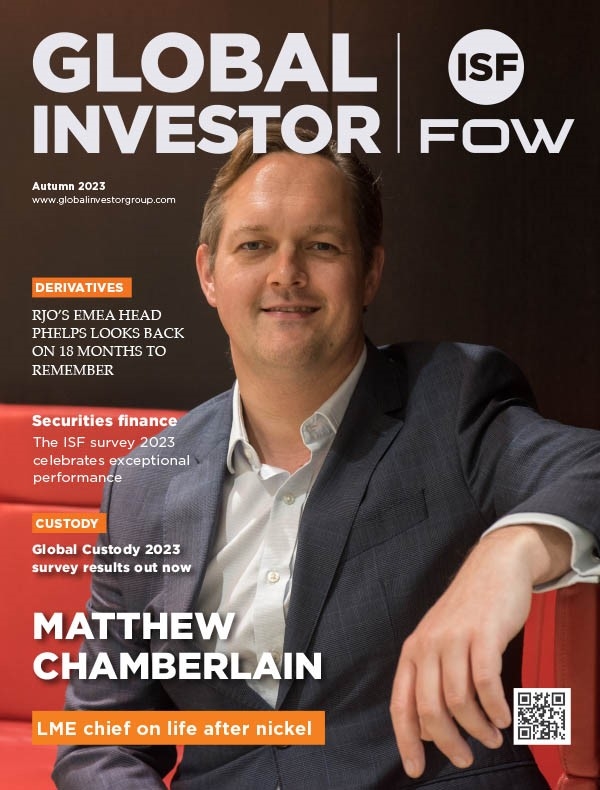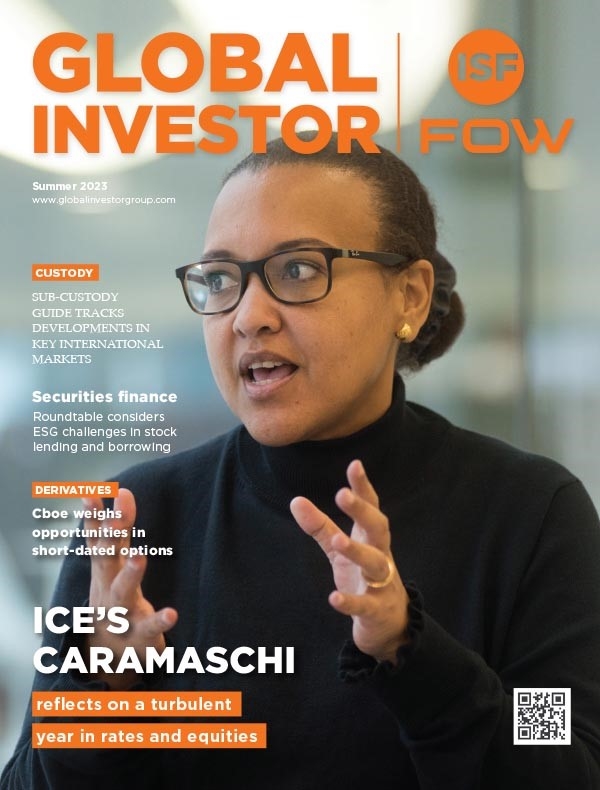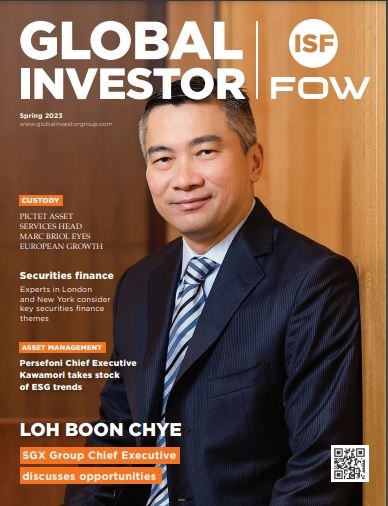Misys: Synthetics on the rise
Historically, one could argue that employing the smartest traders or the salespeople who have established relationships with the big accounts set them apart.
More recently and particularly following the financial crisis, there was a lot of focus on the quality of the technology a bank used and the processes they employed to ensure all their trading activities were adequately risk managed and fully compliant with external regulations.
However, where technology really helped was in delivering more transparency to trading desks managing multi-risk strategies, and automating the middle and back-office operations of OTC trades through exception-based straight-through-processing (STP) workflows, propagation of the impact of corporate actions, generation of confirmations and account postings.
By automating many of these processes, banks removed the operational risk associated with manual keying and moreover, allowed their front-office staff to concentrate on their core objectives, confident in the various levels of information provided to them.
That said, most banks are doing this today and those that are not should not survive as per Darwin’s theory. So what now differentiates the highest performing investment banks from the rest?
“Fortunately, Misys works with 47 of the top 50 banks globally so we have a fairly good idea. What we are seeing as a focal point within our customer base is the ability to enable client-driven business and dramatically decrease the time to market when engaging in these new business lines,” says Christophe de La Bastide, product manager at Misys.

“Misys customers use our technology to support fast-growing trading activities such as synthetic ETFs, synthetic repo and synthetic prime brokerage. There is a strong appetite from the buy-side for these products and the growth seen in European synthetic ETF assets since 2006 is particularly relevant,” continues de La Bastide. “Synthetics offer diversified profiles that physical ETFs cannot offer, explaining the higher number of synthetic ETF products available despite the lower overall AuM.” (see graph above)
It goes without saying that certain banks have profited from the growth in demand while others have not. The ones that have profited can obviously support these instruments and, consequently, can offer these solutions to their clients.
Moreover, the ones that have the best people and technology behind these solutions are able to offer them on a larger scale, usually as a result of the volumes they are able to support by having a robust platform in place. For example, building swaps used in synthetic ETFs is highly complex but can be very straightforward when using the right tools.
“Traders need to have risk insights at several levels of the strategy, and manage the constantly evolving composition of the tracked index, as well as the collateral. Having the right trading dashboards and automating fixing and rebalancing processes is what technology is good at. Long-term partnerships with our largest clients have allowed Misys to add the tools that market participants want to the FusionCapital Sophis platform,” says de La Bastide.
“Within the same family of products, synthetic repo offers an alternative way for banks and asset managers to increase the return on their security inventory and offer security financing services. This activity is triggering very large volumes of events, like equity, bonds and rate fixing, substitutions, dividend management, performance payments and reconciliation. Naturally, without a true STP solution, the operational cost of these activities can quickly escalate,” comments de La Bastide.
The other client-driven business that has emerged in a big way is synthetic prime brokerage. The popularity of these desks within banks has increased massively in recent years and they are being adopted on a large scale everywhere from Canada to South Korea. “The rise of this activity is supported by the need to rationalise the prime brokerage approach.
This is achieved by packaging all the traditional services onto one platform: funding leverage, short selling and lifecycle management are bundled in a single contract, bringing more efficiency in book management for asset managers.
That said, this rationalisation has introduced new challenges when it comes to supporting the numerous swap flavours that clients are asking for. In this business providing flexibility to your offering is crucial as the client is king and their imagination with regards to the solutions they want often has no limit,” says de La Bastide.

The banks that select Misys solutions like FusionCapital Sophis choose them for their flexibility to support existing business lines such as market making, flow exotics and correlation trading, structuring, volatility and dividend arbitrage for an equity derivatives desk while enabling new business lines such as synthetic prime brokerage, synthetic repo and synthetic ETFs (see diagram above).
“A fundamental requirement to support these activities is to provide the asset class coverage needed on these desks such as equity swaps, CFDs, basket swaps, dynamic portfolio swaps, forwards and call-put combos out-of-the-box, all in one system with accurate risk models and operational workflows to support them,” comments de La Bastide.
The advantage this provides is global position keeping, P&L explanation and risk reporting across the different activities within the bank. Moreover, as collateral management is also integrated in the same system traders have a complete view across the P&L, credit and market risks. Essentially, this ensures banks cannot fall victim to scandals like the Jérôme Kerviel case as risk control is consuming the same data as the front and back office.
The robustness in the platform stems from the way operations are managed. “At Misys, one of our core objectives is to minimise the operational risk associated with trading. This is made possible for our clients through our single system approach, which facilitates true straightthrough processing. By automating many of the processes that are usually carried out manually, our customers are able to reduce costs and improve efficiency, which is the foundation for building a successful and scalable business.
“We often consider our platform as a ‘cashflow factory’, able to produce fixing alerts, manage corporate actions automatically and compute the performance, interest and dividend amounts on the fly that can be explained anytime to the client based on the history of events, for example the increases, decreases or substitutions that the swap has seen.”
However, the true benefit to banks for diversifying their activities is the widening and deepening of the relationships with their clients. “If a bank is unable to offer a high-quality service and a wide range of solutions to their clients then that firm might move their business elsewhere where they will receive it. Initially it may just be to support the new products they require but eventually there is a risk they will take all their business away to have all their trades on one platform and this is where Darwin’s theory becomes slightly worrying for the bank,” concludes de La Bastide.
Therefore, while it is of course necessary to support the trends, products and services that are currently in demand, it is vital that these businesses are built with the right foundations that will allow them to be scalable as demand for these services increase.
More importantly however, is the need to have a robust platform that will allow you to be competitive not only in the range of solutions that you are able to provide but the quality of service that you provide them with. In today’s world, this is facilitated not only by the people that provide the service but the processes they employ and moreoverthe technology they have at their disposal to provide it with.
To discover more about FusionCapital Sophis from Misys visit www.misys.com
Found this useful?
Take a complimentary trial of the FOW Marketing Intelligence Platform – the comprehensive source of news and analysis across the buy- and sell- side.
Gain access to:
- A single source of in-depth news, insight and analysis across Asset Management, Securities Finance, Custody, Fund Services and Derivatives
- Our interactive database, optimized to enable you to summarise data and build graphs outlining market activity
- Exclusive whitepapers, supplements and industry analysis curated and published by Futures & Options World
- Breaking news, daily and weekly alerts on the markets most relevant to you



